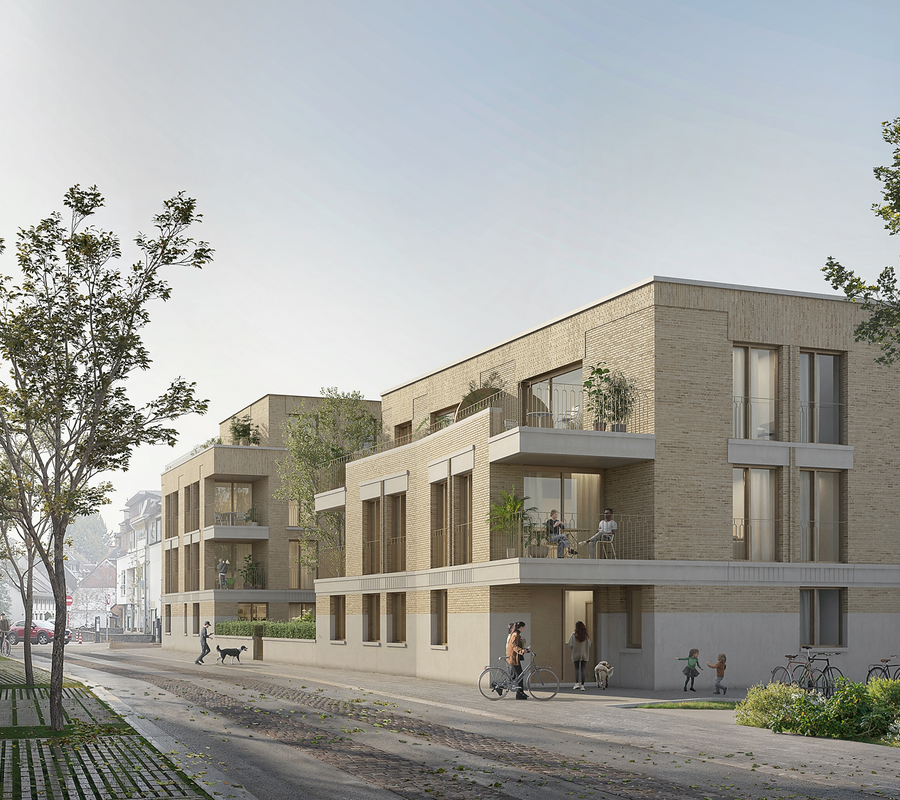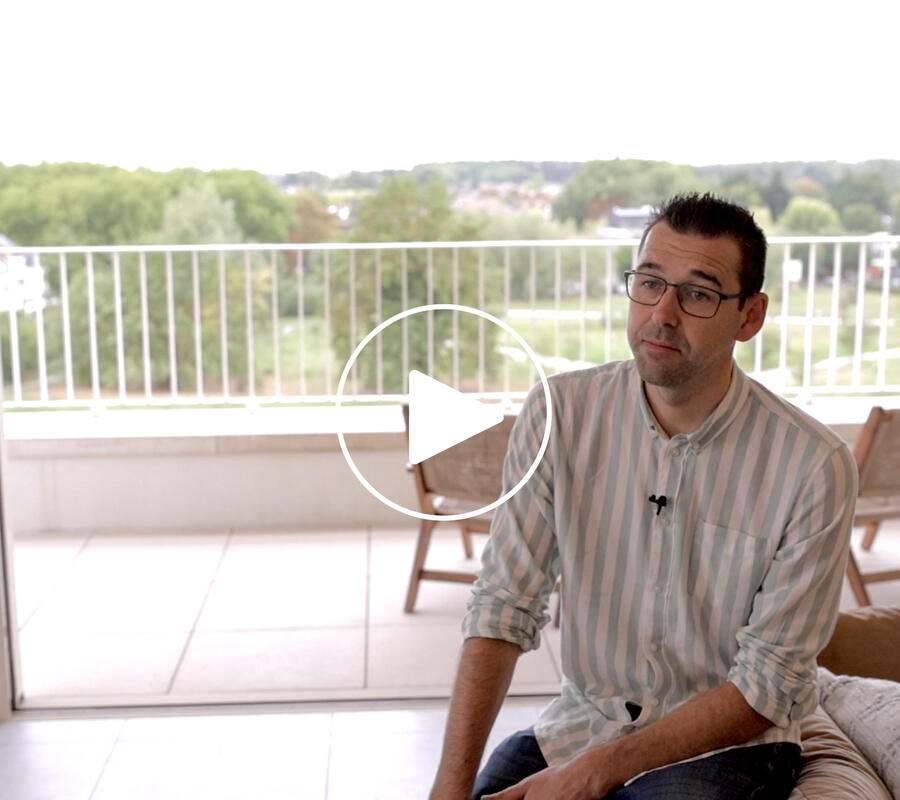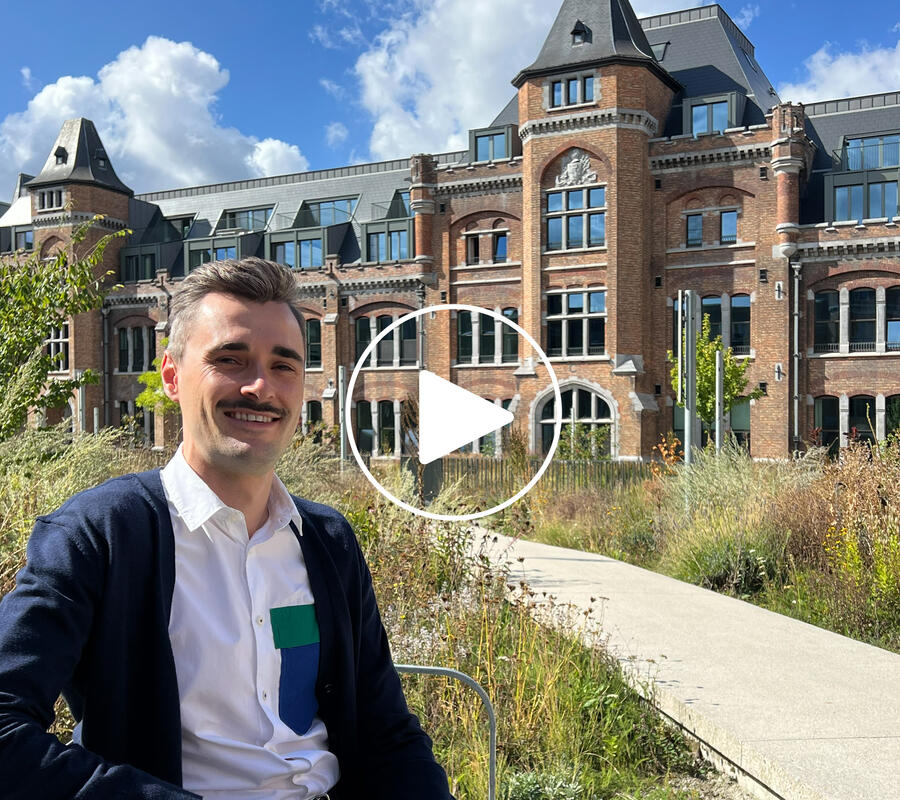Beringen – be-MINE applies for an integrated environmental permit for the be-NATURE project, specifically for the building core and access to the chapel tower in the majestic Coal Preparation Plants 1 and 3. The rezoning of the effective building sections is not yet part of the permit application. A year ago, be-NATURE’s initial plans were revealed: a restoration principle where local nature is introduced into a part of the mining heritage in a controlled way. Maintaining the visual value of the buildings was paramount. After an intensive consultation process with heritage associations, the Flemish Government Architect, the Quality Panel of the city of Beringen, government agencies and administrations, the plans were refined and a widely supported complete solution is now on the table. With respect for the past, the coal preparation plants will be largely reopened to visitors, with a bicycle path passing via the historic coal rail tracks, an experiential walk through the heart of the building and a 360° vista from the chapel tower, the highest spot on the colliery site.
The Beringen colliery site has 100,000 m² of existing building heritage. This makes it the largest industrial heritage site in Flanders and unique in Europe. Of all the other colliery sites in Limburg, it is the only site where the industrial heart of the mine was preserved. The site is being redeveloped by be-MINE NV, a collaboration between Limburg investment company LRM, and private developers Ciril and Van Roey Vastgoed. Over the past 10 years, the former colliery site has undergone a veritable metamorphosis: it has emerged as an attractive and economically valuable touristic/recreational site, with many opportunities for experiential and recreational possibilities while respecting its heritage value.
Historical reconstruction in 3D
The ARAT/DELVA architectural consortium conceived, designed and developed this creative concept on behalf of be-MINE. ARAT completed the painstaking work needed to map all of the coal preparation plants in 3D. It took two years to complete this study phase and inventory. The entire production process and equipment were mapped and placed in a historical perspective. An initial part of the building was commissioned in 1923. Over time, installations, thickeners, workshops, loading buildings, coal bunkers and other production facilities were added. In 1989, the Beringen colliery site was shut down. This exercise gave the architects a deep understanding of the heritage value of buildings and installations. This is essential information for respectful and well-considered changes and restoration.
Philip Baelus, architect and managing director of ARAT Architects: ‘We spent about two years in the Coal Preparation Plants and built a 3D digital model based on all the study work. The entire building, production process and history were mapped in minute detail. Such knowledge is indispensable for making respectful restoration choices in terms of the heritage value of the building and installations. We ensured that the design contained the main parts of the production process were not only preserved, but could also be experienced and seen.’
DELVA took charge of the daily integration of the landscape and maximised the interaction between heritage, nature and water. Steven Delva, founder Landscape Architect and Urban Designer of DELVA: ‘Water was the foundation of coal preparation plant operations. For be-NATURE, we designed a new and spectacular water system that – together with the use of the former concrete coal bunkers as green spaces and opening up the building core so light could enter – creates the ideal seedbed for a three-dimensional and seasonal nature experience. This will create a continuous symbiosis between industrial heritage and area vegetation from Sporenpark to Kapeltoren.’
Public heritage experience
The be-NATURE concept was launched in 2021 to mark the 10th anniversary of be-MINE. The restoration plans are aimed at the absolute preservation of the building's visual value and size. In Coal Preparation Plant 1, the load-bearing skeleton of beams and columns is largely preserved. The unsafe floor slabs and rundown installations are cleaned up. The north side façades will be restored over their full height to preserve the visual and synergy value. The façade is supported by three carefully restored bays. Intensive concrete and steel repairs are being carried out. This will also allow future repurposing of parts of the building.
A few remaining selected installations and most of the structure will be filled up in a controlled manner using the thriving local nature around it.
The be-NATURE concept has been further refined over the past year. Inspiration was drawn, not only from the architects’ study, but especially from discussions with heritage associations, former miners, the Flemish Agency for Immoveable Heritage, the Quality Panel of the city of Beringen, Tourism Limburg and many other policy-makers and stakeholders.
Karolien Sas, managing director be-MINE: ‘The first major evolution is that we have enhanced the green spaces in and around the building and will restore the historic connection between the coal rail tracks and coal preparation plants. They will be transformed into pedestrian and bicycle paths to and through the building. At the centre of the building, the 10,000 m² covered outdoor space under the coal preparation plants will be transformed into a multipurpose area for uses, such as markets and activities. The coal preparation plants will be accessible above via newly introduced subdued pavilions. A pedestrian experience trail will be created passing through the coal preparation plants that alternate between industrial heritage and nature and water features. The eye-catcher on the path is the chapel tower, the highest point of the site. In the new plans, the tower will be preserved and made accessible via stairs and a lift. It will provide a breathtaking 360° outlook of the entire site. The building core of the building is not publicly accessible for safety and practical reasons. This is where we will bring heritage and nature together in a controlled manner. We have provided for more synergy with be-MINE PIT, the mining experience museum, and the Kolenspoor, which has its starting point at be-MINE.’
Tom Vanham, managing director of the Limburg investment company LRM: ‘It’s important that after standing empty for 30 years, something happens again with and in the building. be-MINE NV wants this iconic building to be publicly accessible, both for Beringen residents and the 100,000 visitors a year who come to this site. Besides the pedestrian path and other experiences, we also want to develop economic activities in this building. Because private investment is needed to round out the finances and have a future revenue model. Talks are underway with several prospective investors who want to move the project forward, for example, by accommodating leisure or hospitality activities in the building. So, we consciously left part of the building as a shell as we don’t have a crystal ball. We want to leave enough space for future projects that will no doubt come our way.’
Symbiosis between be-NATURE and the be-MINE PIT mining experience centre
The combination of be-NATURE and the be-MINE PIT mining experience centre creates a perfect symbiosis between heritage consolidation and experience. Commissioner for tourism and heritage Igor Philtjens: ‘The be-NATURE plans will consolidate the visual and synergy value of the site. be-MINE PIT provides a space for the history and perception of the mining past and its impact on Limburg's and Euroregional socio-economic development and Limburg society. Visitors can literally walk in the miners' footsteps on the miner's path. The industrial heritage present will be experienced in its totality. The integrated development extends far beyond the collective viewpoint from the chapel tower. So, we’re providing an all-in-one experience at Europe's largest mining heritage site. And the Kolenspoor also allows us to even extend that experience to the wider Limburg area from Beringen to Eisden.’
Broad base of support
Over time, the plans have been reviewed in many consultations with various heritage associations, administrations and governments. A meeting with all stakeholders in mid-October suggested there was a broad consensus about the improved concept and broad base of support to proceed with the project.
Historian Adriaan Linters: ‘The Beringen coal mine with its infrastructure and impressive mine buildings is the most complete colliery site in Europe. It undoubtedly has universal and international value. Dealing with its complexity requires not only a lot of deliberation but also a lot of creativity. They seem to have already succeeded with this in Beringen. Heritage deserves a proper bequeathal. A complete consensus is a fairy tale. But with lots of discussions and listening to each, we reached a compromise. We at VVIA participated intensively in that dialogue and are happy that it allowed us to make our contribution too. And, we can now continue to collaborate further so that Beringen, Limburg and Flanders can be proud of what the site achieved here in the past and what it will do in the future.’
Piet Jaspaert, vice-president Europa Nostra: ‘In 2018, Europa Nostra recognised be-MINE’s Coal Preparation Plants 1 and 3 as one of the most endangered heritage sites in Europe. We greatly appreciate the open dialogue we entered into with be-MINE. A project is now on the table that captures the imagination and preserves the appearance of this iconic colliery site thanks to the intense consultation with and input from all parties involved. It safeguards the industrial heritage value. And the anticipated interaction with be-MINE PIT illustrates the human and social relevance of the mine for Beringen and the Limburg community. We are also counting on be-MINE to figure out what success formulas are needed to ensure this challenging project is sustainable.’Lambert Vandebergh, secretary of the Working Group on Monument Conservation Beringen: ‘We, the Working Group on Monument Conservation Beringen, hope that be-NATURE and be-MINE PIT aided by an improved understanding will now smelt into a unique tourist heritage project with international potential and also become a living part of the city that includes the local population. This should be the ambition and challenge of all stakeholders involved in the future.’
Thomas Vints, mayor of the city of Beringen: ‘The design and project that be-NATURE presented to us today fulfil what the city government always wanted, which is to preserve its visual and synergy value. Certainly, the imposing view from the Kolenspoor and the coal preparation plant on the mining site is a unique vision that must survive. This picture will be enhanced by the planned landscaping of the Sporenpark. The be-NATURE project has the potential to become a catalyst for life and experience at be-MINE and the Beringen-Mijn. Finally, we, the city government, appreciate the way this design was drawn up with enough participation. And that it took into account the knowledge, ideas and suggestions from local heritage associations and the Quality Panel Beringen Mijn.’
Matthias Diependaele, Flemish minister of Finance and Budget, Housing and Immoveable Heritage: ‘The be-MINE site with its coal preparation plants is the largest heritage site in Flanders. The mines are an integral part of our Flemish identity and our rich industrial past. I’m proud that I was closely involved with this project since the beginning of my term as heritage minister. That the plans can now go into implementation is the icing on the cake for a lot of people. We’re giving a beautiful heritage site a new original future that ensures future generations can also enjoy it.’
‘Today, we’re taking the first steps to immerse tourists in the mining history that characterises Limburg from 2024 onwards. At the same time, be-MINE is contributing more than just making Limburg and Flanders more climate-robust. Surrounded by beautiful nature, everyone who so desires will be able to walk the Kolenspoor track from the highest point at this site to deep underground. Thanks to be-NATURE, the rich history of our mining past and the challenges of the future will soon come together fraternally at be-MINE,’ said Flemish Minister for Nature and Tourism Zuhal Demir.
Timing and cost
The be-NATURE project is budgeted at 12.5 million euros, including for the landscaping. Financial resources come from the Flemish government, the city of Beringen, LSM, private investors and be-MINE.
be-MINE will soon submit the building application for the building core and access to the chapel tower in the majestic Coal Preparation Plants 1 and 3. The goal is to start the work no later than the third quarter of 2023. Commissioning of the building is scheduled for the end of 2024.
An information campaign aimed at local residents and visitors will also be launched from autumn onwards using appealing visualisations to present the plans.



